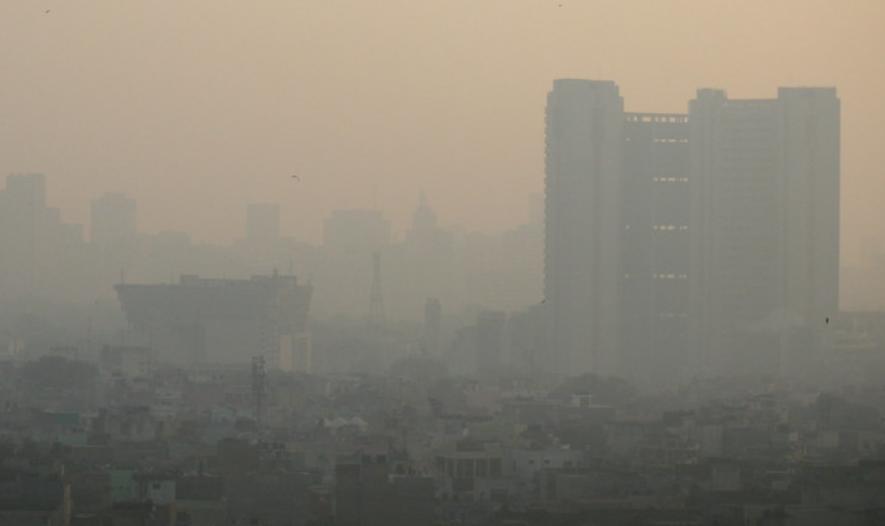Millions in Indo-Gangetic Plains, Himalayan Foothills Forced to Breathe Toxic Air: ICIMOD Scientists

Representational Image. Courtesy: Flickr
Patna: Increasing air pollution has been threatening environment and health across the Indo-Gangetic Plains and Himalayan Foothills (IGP-HF), with hundreds of thousands of people being forced to breathe toxic air.
According to scientists of Kathmandu-based International Centre for Integrated Mountain Development (ICIMOD), millions of people in IGP-HF includes India, continue to breathe hazardous air, with recent atmospheric concentrations of PM2.5, the finest and most dangerous particulate matter that measure less than 2.5 micrometres in diameter, reported to be as high as 20 times the World Health Organisation’s (WHO) recommended daily limit.
Researchers at regional inter-governmental knowledge centre at ICIMOD said that major cities across the region, including Multan, Lahore, New Delhi, Kolkata and Dhaka were seeing elevated levels of smoke, fog, particulate matter and other air pollutants.
In view of the serious threat to environment and health, they are developing a suite of visualisation tools that gives users an option for seeing historical and forecasted trends in local, sub-regional and regional air pollution levels.
“Using a combination of real-time data captured from ground sensors and satellite imagery, these visualisation tools are hosted on ICIMOD’s Air Quality Dashboard, which is open to the public for use. Using one such tool, which uses data generated from the Weather Research and Forecasting model coupled with Chemistry (WRF-Chem), the team has been able to show daily PM2.5 levels across the IGP during the first three weeks of November,” said a scientist Bhupesh Adhikary, senior air quality specialist, ICIMOD.
The resulting time lapse shows plumes of PM2.5 stretching across the IGP and reaching out into the Bay of Bengal. The values are as high as 300 micrograms per cubic metre (µg/m³,as daily values) in certain hotspots, including Lahore in Pakistan and New Delhi in India, which is 20 times higher than the WHO daily guideline of 15 µg/m³, he said.
Bertand Bessagnent, coordinator, Action for Clean Air, ICIMOD, said the WRF-Chem is a model that helps air pollution scientists understand the interaction between weather and pollution factors, and helps monitor and anticipate outbreaks of air pollution.
Data from WRF-Chem combines data on both local and regional emissions to give a more accurate picture of how air pollution behaves at a transboundary scale, as often seen in the IGP-HF. Visitors can use this tool to get a two-day forecast of likely air pollution scenarios as they unfold.
Transboundary air pollution is a huge issue in the IGP-HF, with this latest episode of pollution resulting in school closures in Pakistan’s second largest city, Lahore, and across parts of North India. A substantial body of global evidence – that continues to grow – shows that there are serious health consequences of people living in polluted conditions. While globally it was the second leading risk factor for early death in 2021, it is estimated that two million premature deaths happen due to air pollution in South Asia every year, said ICIMOD’s scientists.
Earlier, this year ICIMOD’s study highlighted that the IGP-HF region airshed includes some of the world’s most polluted countries. Air pollution costs the global economy $8 trillion a year, and in South Asia wipes out more than 10% of gross domestic product per annum.
Izabella Koziell, Deputy Director General of ICIMOD, had said then, “The longer-term health and productivity costs, and the fall-out from the temperature rises that air pollution accelerates, will be higher still. These are costs that low- and middle-income countries in this region can ill afford. Stakeholders from across the region simply have to come together to shift the dial on dirty air.”
The experts opined that India alone could save up to $1.3 trillion in health benefits by 2030 by meeting air quality standards. Pakistan is estimated to lose $1 billion a year in environmental degradation chiefly due to air pollution.
Rapid industrialisation and population growth are key drivers of declining air quality in South Asia, with sources including transport, industry, agriculture, waste burning, and domestic solid fuel use
ICIMOD’s study said the toxic air in South Asia has risen more than 50% since the start of this century. This has GDP in the region and shortened the average lifespan in India, Nepal, Bangladesh and Pakistan by five years, versus four months for the average American, said leading regional and international scientists at an even held in Kathmandu, Nepal.
According to experts , populations across the region are exposed to polluted air, exposure and vulnerability are greatest among those living in poverty – including those working long hours outdoors, communities living close to landfills or factories, or families unable to afford clean alternatives to solid fuels for cooking, lighting, or heating.
The writer is a freelancer based in Patna, Bihar.
Get the latest reports & analysis with people's perspective on Protests, movements & deep analytical videos, discussions of the current affairs in your Telegram app. Subscribe to NewsClick's Telegram channel & get Real-Time updates on stories, as they get published on our website.














